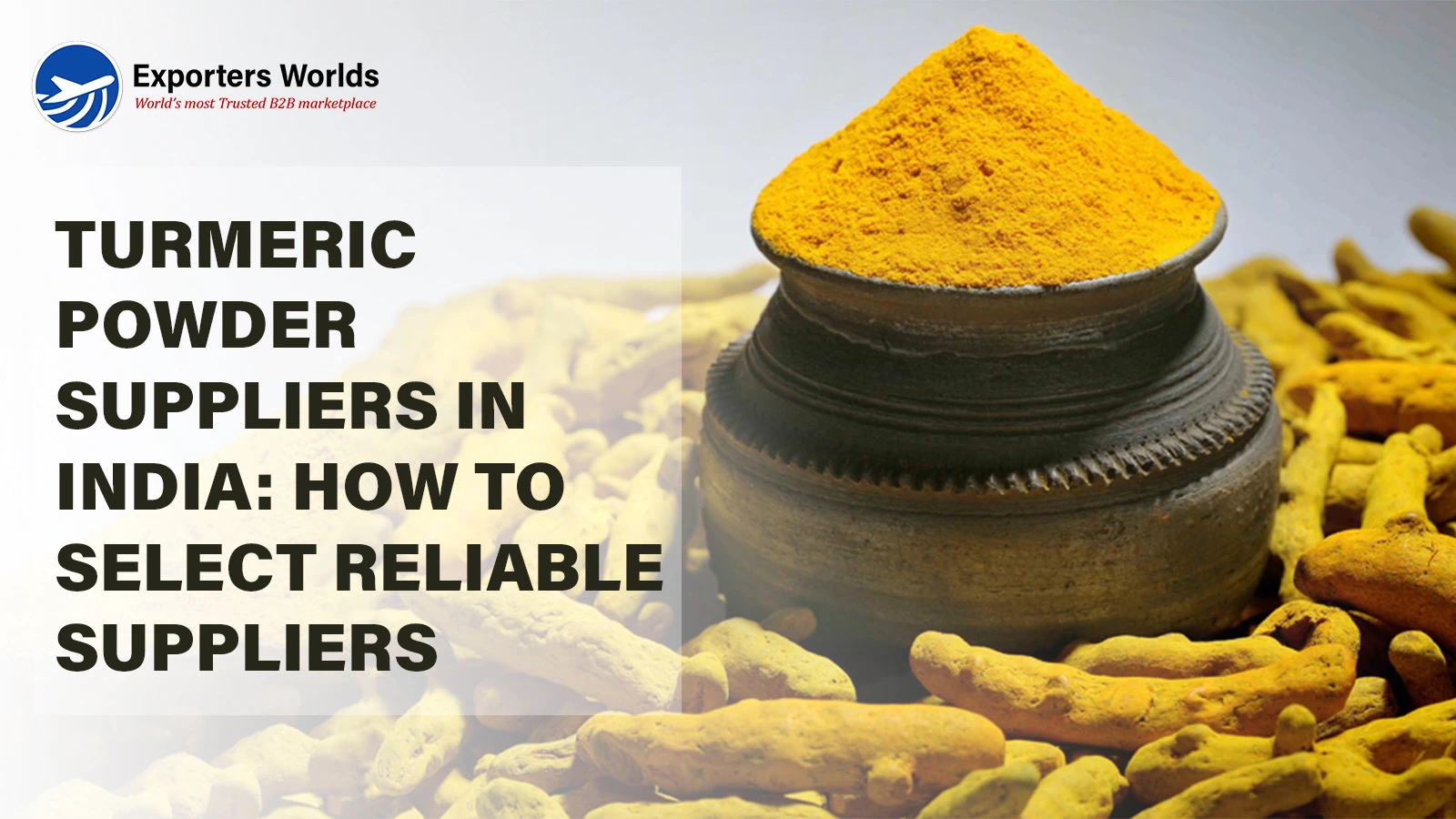How to Export Spices from India: Key Insights for Exporters

What If One Shipment from Your Brand Could Redefine the Global Spice Market?
India isn’t just the land of spices—it’s the heartbeat of global flavor. In FY 2023-24, India's spice exports reached an all-time high of $4.46 billion, marking a 17% increase from the previous year, with over 1.5 million tonnes shipped. (source: thehindubusinessline.com) But here’s the catch: While the aroma of Indian spices lures kitchens worldwide, only a handful of exporters truly know how to ride this wave profitably.
You could be one of them. But not by following generic advice or outdated playbooks. To thrive as a spices exporter, you must think globally, act precisely, and brand intelligently—all without losing touch with authenticity.
So, if you're wondering how to begin, what to export, and where the real opportunities lie—this isn't just another guide. This is your roadmap to international relevance.
Spices Are Not Just Ingredients—They Are India's Global Identity in a Jar
For centuries, India has mesmerized the world with its spice offerings—from Kerala’s pepper hills to Rajasthan’s cumin farms. India produces about 75 of the 109 varieties listed by the International Organization for Standardization (ISO), with chili, cumin, turmeric, ginger, and coriander making up approximately 76% of total production. (source: ibef.org) This legacy isn’t just cultural—it’s commercial gold.
But being a spices company in India today is more than producing in bulk. It’s about understanding what drives international demand: hygiene certifications, traceability, ethical sourcing, and flawless logistics. Buyers no longer want “just spices.” They want stories, assurance, and quality sealed in every shipment.
And if you’re wondering which spices are exported from India, the list spans from basic kitchen staples like turmeric, cumin, and chili to high-value items like saffron and nutmeg. Organic spices, particularly turmeric, chili, and ginger, are witnessing a significant rise in demand due to the growing health-conscious consumer market.
Step-by-Step: How to Start a Spices Export Business in India
Starting sounds overwhelming—until it doesn’t. Let’s simplify:
First, you need the Import Export Code (IEC). This is your official entry into global trade, issued by DGFT. Without it, you can’t legally send a single consignment abroad.
Next is GST registration. Apart from legitimizing your business, it unlocks tax refunds and easier compliance—a must-have for seamless operations.
Then comes APEDA registration, especially for food and agro products. This gives your brand credibility and allows access to export subsidies, buyer connections, and government certifications that global buyers recognize.
Now, comes the real game: finding the right buyers and distributors. This step often overwhelms small exporters. But the key lies in accessing verified, filtered, and trusted networks—platforms where real decision-makers come looking for products like yours.
Take Mehul, a turmeric grower in Gujarat. In 2018, he was barely surviving through local mandi sales. But by 2023, his organic turmeric was on retail shelves in Berlin and Lyon. How? He got the IEC, registered with APEDA, curated his packaging, and used a global platform designed to connect him with authentic spice importers. What changed wasn’t just the product—it was access.
If you need a practical starting point, go through the list of spices exported from India—you’ll find ample opportunities to specialize and scale.
What Are Global Buyers Really Looking For in a Spices Exporter?
Price matters. But trust matters more.
Buyers in Europe, North America, and the Gulf want documentation, traceability, pesticide-free proof, and consistent supply. In fact, nearly 12% of spice samples tested in India failed to meet quality and safety standards, highlighting the critical importance of compliance. (source: reuters.com) They’re not just evaluating your product; they’re evaluating your backend systems, your sourcing consistency, and even your social proof online.
They want to know your spice products are produced in facilities that pass audits. That your packaging preserves potency. That your logistics meet timelines—every time. In their eyes, you are either a trusted partner—or not a partner at all.
This is where being recognized among the best spices exporters in India truly gives you a competitive edge—by signaling a commitment to quality and professionalism that global buyers demand.
What Products to Export? A Deep Dive into In-Demand Spice Products
India's spice exports may sound vast—but the winning exports fall into clear categories:
-
Turmeric: A superfood for wellness brands. Especially valued when it's organic.
-
Cumin: Vital for Middle Eastern and Mexican cuisines.
-
Cardamom: Luxury spice with a high mark-up.
-
Chili: India’s single biggest spice export by volume.
-
Black Pepper: Loved by the EU, especially from Kerala.
-
Ginger: Fresh and dried varieties find use in health supplements and teas.
In particular, organic spices India leads in turmeric, chili, and ginger. The rise of e-commerce has significantly transformed the landscape of organic spice sales, making them more accessible to a wider audience and boosting exports. (source: dataverseeinc.in) Health-conscious consumers globally now look for value-added spice blends too—ready-to-use masalas, dry rubs, seasonings, and cold-ground powders. Exporting these blends doesn’t just raise your value; it builds your brand.
And if you’re looking to enter markets with bulk shipments, building connections with verified spice importers will be the cornerstone of sustained success.
Why Kerala’s Spices Are Whispered About in Europe’s Elite Kitchens
It’s not hype—it’s heritage. Kerala’s biodiversity, moisture-rich terrain, and age-old cultivation methods make its spices uniquely potent.
European importers seek out spices exporters in Kerala because of traceable estates, farmer cooperatives, and clean-label processing. Whether it’s cardamom or black pepper, these exports are more than a commodity—they're a luxury statement.
In fact, many of the most consistent spices exporter success stories have one thing in common: they’re based in Kerala and deeply connected to their local ecosystems.
The Secret Engine Behind India's B2B Growth: Indian Spices Wholesale
The silent powerhouse in this business isn’t always visible—it’s the wholesale network.
Through bulk operations, spices exporters in India gain repeat buyers, favorable shipping contracts, and quick market entry. These wholesalers become key players because they understand buyer behavior, scale, and shelf-life management.
Indian spices wholesale trade thrives where pricing meets consistency. But even here, trust is currency. To win, your brand must be present where serious buyers look, not just on marketplaces—but in curated ecosystems where trust, transaction, and transparency flow effortlessly.
If you’re aiming to be the go-to spices company in India for large-scale trade, building relationships in the wholesale domain is non-negotiable.
From Soil to Shipping: What Spices Manufacturing Companies in India Are Doing Right
The manufacturing edge isn’t just about drying and grinding anymore.
Spices manufacturing companies in India now rely on high-tech grading systems, sterilization units, and vacuum-sealed packing lines to meet Western buyer expectations. Compliance with FSSAI, HACCP, and ISO standards is no longer optional—it’s survival.
That’s why serious exporters partner with manufacturers that combine tradition with technology. Because flavor without safety is flavor wasted.
And if you’re setting up your own unit, aligning with these advanced manufacturing standards will instantly place you closer to the top ranks of best spices exporters in India.
The Way Forward for Ambitious Spice Exporters
India’s spice market has boundless potential—but the key lies in connecting with the right buyers at the right time. And the best way to navigate this journey is through clear visibility, reliable partnerships, and global network integration.
As you scale, remember—opportunities multiply when you make the right moves. From small batches to wholesale shipments, every exporter can find their niche in the ever-growing spice ecosystem.
While finding trustworthy buyers and securing solid logistics can be a challenge, the right B2B marketplace can serve as the bridge between local spice manufacturers and international markets, ensuring smooth transactions every step of the way.
In Conclusion
The spice trade is one of India’s most dynamic sectors—and with the right partnerships, your brand could rise to global prominence. Whether you're a small startup or a well-established exporter, Exporters Worlds provides the tools, networks, and platforms you need to connect with global buyers, navigate regulations, and grow your spice export business.
Now’s the time to unlock your spice-exporting potential, ensuring your products make a mark on kitchens across the world.




